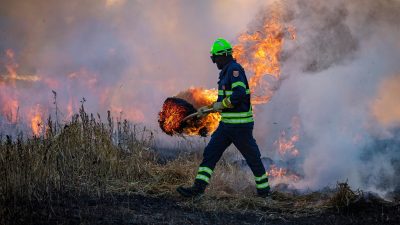The Forgotten Holocaust: How the Northern Chinese Famine of 1876–1879 Killed Millions and Changed History
The Overlooked Catastrophe: How the Northern Chinese Famine of 1876–1879 Was Allowed to Devastate Millions
The Northern Chinese Famine of 1876–1879 stands as one of the most harrowing yet largely overlooked humanitarian crises in history. Millions of lives were lost to starvation, disease, and societal collapse. While natural calamities played a role, the disaster was significantly exacerbated by poor governance, foreign exploitation, and economic instability. This was not just a case of food shortage—it was a catastrophe shaped by human decisions and systemic failures.
Beyond Starvation: The Socioeconomic Breakdown of Northern China
The famine’s effects reached far beyond the immediate deaths, causing long-term social and economic devastation. Entire villages were abandoned, with skeletal structures standing as silent testaments to the tragedy. As desperate families fled in search of sustenance, the region witnessed mass displacement, placing additional strain on already struggling areas.
The economic collapse was staggering. With harvests failing, agriculture plummeted, causing trade routes to deteriorate and markets to shut down. Food prices soared, making even the most basic provisions unaffordable. Social order disintegrated as starvation drove people to theft, violence, and extreme desperation. The famine was not merely about hunger—it dismantled the foundations of society itself.
A Death Toll Beyond Comprehension: The True Scope of the 1876–1879 Famine
- Unimaginable Numbers: Estimates suggest that between 9 and 13 million individuals perished during the famine, making it one of history’s deadliest food crises.
- More Than Just Starvation: Malnutrition-weakened bodies became highly susceptible to deadly diseases such as cholera, typhoid, and dysentery, leading to countless additional fatalities.
- Untold Suffering: The true number of casualties may never be known, as many deaths in remote and impoverished regions went unrecorded, their stories lost to history.
Could This Have Been Prevented? How Government Mismanagement Turned a Crisis into a Disaster
The famine’s severity was compounded by governmental negligence and corruption. Relief efforts were marred by inefficiency, with provincial authorities hoarding food meant for starving communities and instead selling it for profit. Bureaucratic delays rendered aid efforts largely ineffective, leaving millions without support when they needed it most.
Infrastructure failures further intensified the crisis. Essential irrigation projects were never implemented, leaving agricultural lands vulnerable to prolonged droughts. Food distribution networks collapsed due to poor planning, making it impossible for supplies to reach those in dire need. The famine was not solely a natural calamity—it was a governance failure of catastrophic proportions.
Foreign Exploitation: How Western Powers Profited from China’s Misery
China’s already fragile economy was further weakened by external interference. British-controlled grain trade policies prioritised exports over domestic needs, depriving millions of essential sustenance. At the height of the famine, grain shipments continued overseas, ensuring foreign profits while local populations suffered.
Western imperialists capitalised on China’s vulnerabilities, using the crisis to expand their economic and political dominance. Missionary groups leveraged the disaster to spread foreign ideologies, while opportunistic traders and landowners seized resources abandoned by famine-stricken communities. Rather than alleviating suffering, foreign intervention often deepened the crisis, turning a natural disaster into a weapon of economic control.
Desperation and Horror: The Unthinkable Realities of the Famine
As starvation gripped the population, society spiralled into unthinkable acts of desperation. Reports surfaced of widespread cannibalism, with families forced to make heartbreaking choices to survive. Parents, unable to feed their children, resorted to selling them for food, highlighting the sheer depths of despair.
In many regions, grave robbing became rampant as people searched for any means to sustain themselves. Stories emerged of individuals preying on the weak, abducting children, and engaging in unthinkable acts of savagery. The famine stripped humanity down to its most primal instincts, showcasing the horrifying consequences of prolonged deprivation.
The Lasting Impact: How the Famine Shaped China’s Future
- A Traumatised Generation: The psychological scars left by the famine haunted survivors for decades, shaping their attitudes towards food security and governance.
- Mass Relocation: With vast regions rendered uninhabitable, many survivors migrated to southern provinces, altering China’s demographic landscape.
- Political Consequences: The famine severely weakened the Qing Dynasty, fuelling widespread resentment that contributed to future uprisings and the eventual collapse of imperial rule.
Famine in the Modern Age: Are We Doomed to Repeat History?
Hunger remains a global crisis, often driven by the same factors that exacerbated the Northern Chinese Famine—corruption, climate change, and economic disparity. The failures of 1876–1879 serve as a stark warning: without effective governance and equitable resource distribution, history will continue to repeat itself.
Despite technological advancements, global hunger persists. Governments still manipulate food supplies for political leverage, and foreign interventions frequently prioritise profit over genuine humanitarian aid. The lessons from this famine demonstrate that starvation is rarely a matter of food scarcity alone—it is a crisis of justice and responsibility.
Historical Significance: How the Famine Shaped China’s Development
The disaster left a lasting imprint on China’s history. The Qing government’s inability to manage the crisis contributed to growing public discontent, which ultimately played a role in the dynasty’s downfall.
Economically, the famine devastated agricultural productivity, leading to prolonged instability in food production. The event became a defining moment in Chinese history, shaping future policies on food security and crisis management.
Conclusion: The True Cost of Neglect and Exploitation
The Northern Chinese Famine was not simply an inevitable tragedy—it was a preventable catastrophe worsened by poor leadership, foreign manipulation, and systemic failures. Millions perished not just from hunger but from the consequences of political mismanagement and economic greed.
Recognising the significance of this disaster is crucial, especially in a world where hunger remains a pressing issue. The famine of 1876–1879 serves as a reminder that food shortages are rarely caused by nature alone—they are shaped by human decisions, policies, and priorities.
5 Short FAQs About the Northern Chinese Famine (1876–1879)
1. What were the primary causes of the Northern Chinese Famine?
The famine resulted from severe droughts, poor governance, and economic exploitation, all of which worsened food shortages.
2. How many people perished during the famine?
Historical records suggest between 9 and 13 million people died from starvation, disease, and social collapse.
3. Did foreign powers influence the famine’s severity?
Yes, British grain trade policies and Western economic interference prioritised profits over Chinese food security, worsening the crisis.
4. Were there reports of cannibalism during the famine?
Yes, extreme starvation led to widespread reports of cannibalism, with desperate individuals resorting to horrific measures for survival.
5. How did the famine affect China in the long term?
It weakened the Qing Dynasty, led to mass migrations, and left deep economic and social scars on the affected regions.
References:
“Northern Chinese Famine of 1876–1879”
“North China famine, 1876-79”
“The North China Famine of 1876-79”
“The Famine in China, 1878”
YTlinks
GREATEST NATURAL DISASTERS IN HISTORY – NORTHERN CHINESE FAMINE DOCUMENTARY
The Northern Chinese Famine 1876 1879 Tragedy, Resilience, and Societal Transformation




